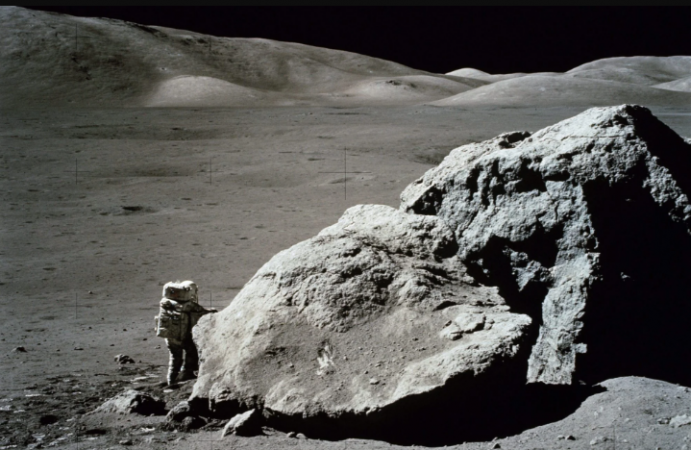
USA: The goal of NASA is to establish a permanent presence on the Moon, and it seems that the space agency is moving in the right direction. The simulated lunar soil, or the fine-grained material found on the Moon's surface, was successfully oxygenated by researchers at NASA's Houston research facility. It's interesting to note that this was the first time the extraction had been carried out in a hoover setting.
In-situ resource utilisation, where astronauts can directly extract and use resources from the Moon, is what NASA hopes this accomplishment will pave the way for.
Future 'lunar visitors' might find it useful by being able to stay longer and travel farther on the Moon if oxygen is used as a propellant for transportation.
Also Read: Slack has unveiled Canvas, an in-app feature same as Google Docs
The extraction procedure was carried out by the Carbothermal Reduction Demonstration (CaRD) team at NASA's Johnson Space Centre in Houston under conditions resembling those on the Moon.
The "Dirty Thermal Vacuum Chamber," as described in the official blog post, was a unique spherical 15-foot wide chamber used by the researchers. The chamber is known as "dirty" because it can test unclean samples inside.
Also Read: The AI-powered chatbot ChatGPT from OpenAI has chosen to tighten its privacy controls
The team heated and extracted oxygen from a carbothermal reactor by heating a lunar soil simulant inside of it with a high-powered laser beam from a solar energy concentrator.
Steel and solar panels have both been produced using the carbothermal reduction process on Earth. The procedure uses high temperatures to produce carbon dioxide or monoxide.
The team used a tool called the Mass Spectrometer Observing Lunar Operations (MSolo) to find carbon monoxide after heating the model soil.
Two upcoming missions will visit the south pole of the Moon using a similar device.
One of them will launch in November 2024: NASA's Volatiles Investigating Polar Exploration Rover (VIPER) mission. On the Moon, it will search for water ice.
According to NASA senior engineer Aaron Paz, this technology has the potential to produce several times its own weight in oxygen per year on the lunar surface, enabling a long-term human presence and lunar economy.
The innovation might be applied to the upcoming Artemis missions and "journeys deeper into our solar system."